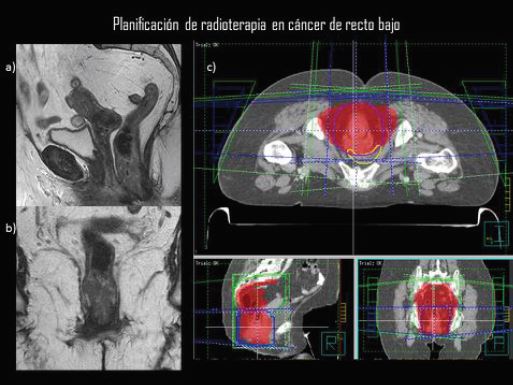HALLAZGOS RADIOLÓGICOS ABDOMINALES TRAS RADIOTERAPIA EXTERNA EN PACIENTES ONCOLÓGICOS
Palabras clave:
HALLAZGOS RADIOLÓGICOS ABDOMINALES, PACIENTES ONCOLÓGICOS, poster, seramResumen
Objetivos Docentes
• Describir los hallazgos radiológicos secundarios a los efectos de la radioterapia en los órganos abdominales y pelvianos sanos.
• Diferenciar estos cambios post radioterapia de otras enfermedades.
Revisión del tema
Introducción:
La radioterapia se usa desde hace décadas en el tratamiento de numerosos tumores en la cavidad abdominal como terapia primaria, adyuvante o paliativa. La primera vez que se usa radiaciones ionizantes en el tratamiento del cáncer es en el año 1896, sólo un año después del descubrimiento de los rayos X por Roentgen.
Descargas
Citas
Maturen, K. E., Feng, M. U., Ashish, P. W., Shadi, F., Appelman, H. D., Francis, I. R., & Joel, F. (2013). Imaging Effects of Radiation Therapy in the Abdomen and Pelvis?: Evaluating “ Innocent Bystander.” RadioGraphics, 33, 599–619.
Peterson, C. M., Menias, C. O., & Katz, D. S. (2014). Radiation-induced effects to nontarget abdominal and pelvic viscera. Radiologic Clinics of North America, 52(5), 1041–53.
Terezakis, S. A., Heron, D. E., Lavigne, R. F., Diehn, M., & Loo, B. W. (2011). What the diagnostic radiologist needs to know about radiation oncology. Radiology, 261(1), 30–44.
Kwek, J.-W., Iyer, R. B., Dunnington, J., Faria, S., & Silverman, P. M. (2006). Spectrum of imaging findings in the abdomen after radiotherapy. AJR. American Journal of Roentgenology, 187(5), 1204–11.
Iyer, R. B., Jhingran, A., Sawaf, H., & Libshitz, H. I. (2001). Imaging findings after radiotherapy to the pelvis. American Journal of Roentgenology, 177(5), 1083–1089.
Addley, H. C., Hebert, F., Vargas, A., & Penelope, L. (2010). Pelvic Imaging Following Chemotherapy and Radiation Therapy for Gynecologic Malignancies. RadioGraphics, 30, 1843–1857.
Andreyev, J. (2007). Gastrointestinal symptoms after pelvic radiotherapy: a new understanding to improve management of symptomatic patients. Lancet Oncol, 8(1474-5488 (Electronic)), 1007–1017.
Pan, C. C., Kavanagh, B. D., Dawson, L. a, Li, X. A., Das, S. K., Miften, M., & Ten Haken, R. K. (2010). Radiation-associated liver injury. International Journal of Radiation Oncology, Biology, Physics, 76(3), 94–100.
Anderson, S. W., Kruskal, J. B., & Kane, R. a. (2009). Benign hepatic tumors and iatrogenic pseudotumors. Radiographics : A Review Publication of the Radiological Society of North America, Inc, 29(1), 211–229.
Capps W, Fulcher A, Szucs R, T. M. (1997). Imaging Features Changes in the of Radiation-induced Changes in the abdomen. RadioGraphics, 17, 1455–1473.
Dawson, L. a, Kavanagh, B. D., Paulino, A. C., Das, S. K., Miften, M., Li, X. A., Schultheiss, T. E. (2010). Radiation-associated kidney injury. International Journal of Radiation Oncology, Biology, Physics, 76(3 Suppl), S108–15.
Maturen, K. E., Feng, M. U., Wizauer, E. J., Parker, R. A., & Ellis, J. H. (2014). Renal Remodeling After Abdominal Radiation Therapy: Parenchymal and Functional Changes. AJR. American Journal of Roentgenology, 203(August), 192–198.
Purdy, J. a. (2008). Dose to normal tissues outside the radiation therapy patient’s treated volume: a review of different radiation therapy techniques. Health Physics, 95(5), 666–76.
Iyer, R., & Jhingran, a. (2006). Radiation injury: imaging findings in the chest, abdomen and pelvis after therapeutic radiation. Cancer Imaging : The Official Publication of the International Cancer Imaging Society, 6(October), S131–9.
Bortfeld, T., & Jeraj, R. (2011). The physical basis and future of radiation therapy. The British Journal of Radiology, 84(1002), 485–98.
Bondiaf, M., Soyer, P., Pelage, J., Kardache, M., Nemeth, J., Dufresne, A. C., & Rymer, R. (2000). Pictorial review CT of radiation-induced injury of the gastrointestinal tract : spectrum of findings with barium studies correlation. European Radiology, 925, 920–925.


